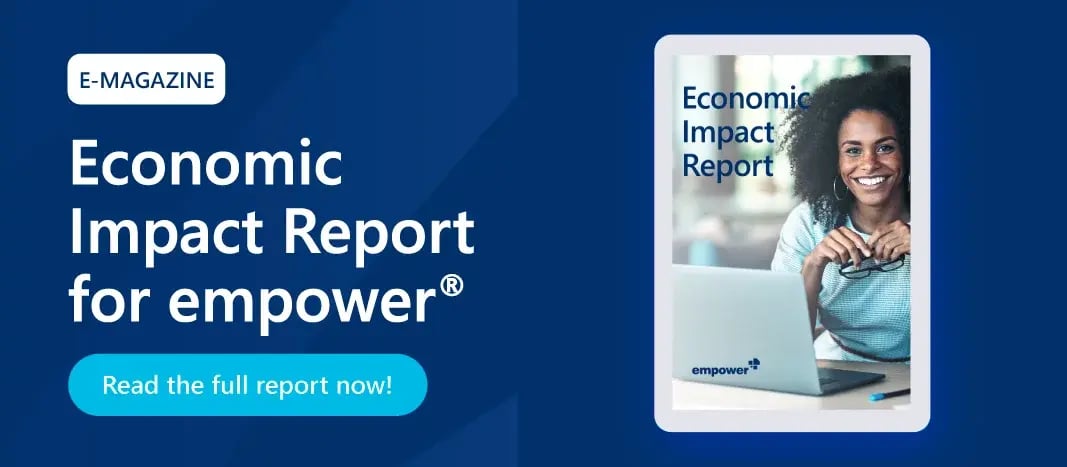Brand equity in times of crisis: When strong brands act as an anchor
The acronym VUCA is commonly used to describe the challenges of complex and uncertain environments that business leaders face. It’s quite applicable to the current economic situation and more generally to the world events in which we currently find ourselves.
VUCA stands for volatility, complexity, ambiguity, and anxiety,. Crises fuel these circumstances and lead to a general uncertainty that affects both companies and consumers.
In such times, proven approaches gain importance as they provide stability and serve as anchors. Buying behavior aligns with this need for stability. Price takes a back seat, while trust in brands that stand for values such as cohesion, consistency, integrity, and quality comes to the fore.
The power of the brand in uncertain times
The desire for stability, security, and comfort is a basic need for all of us. Unfortunately, we’re facing a world where it’s become difficult to meet that need. Wars, pandemics, and economic crises are just some of the uncertainty factors we face. These events continue to have a serious impact on many sectors of the economy. Added to this are inflation, rising living and energy costs, and the threatening and increasingly noticeable climate crisis.
In this context, it’s not surprising that the purchasing behavior of companies and consumers is evolving. On the one hand, greater attention is being paid to keeping costs as low as possible. On the other hand, multiple crises reveal a completely different trend: branded products are increasingly favored. This was already evident during the financial crisis in 2008, when the world was in turmoil for a while. In uncertain times, both consumers and companies look to brands they’re familiar with. Companies that work continuously on their brand awareness over a long period of time therefore have a clear advantage.
Long-standing research by McKinsey shows that strong brands create almost twice as much value as the market average (MSCI index) during crises. They also recover more quickly from crises than less established brands. The reason is obvious: if a company succeeds in building a solid brand reputation that reflects values such as security, professionalism, cohesion, and reliability, these emotions often outweigh price.
Another phenomenon gives well-known brands an advantage in times of crisis: the desire to treat oneself. True to the mottos "Now, more than ever" or "It’s my one and only treat," consumers counterbalance losses they experience. For most people, a crisis is accompanied by restrictions in the enjoyable part of everyday life. Instead of eating out, you might treat yourself to that expensive steak from the butcher’s shop once a week. Instead of going to the movies every two weeks as usual, you opt for the big flat-screen TV from a renowned brand.
Accordingly, the brand not only serves as a seal of quality, but also embodies all the emotions that consumers miss in difficult times. On top of this, purchasing branded products or using renowned service providers compensates for restrictions in the private sphere caused by the crisis.

What makes a go-to brand?
Establishing yourself as one of the leading brands in demand even in turbulent times requires careful preparatory work. First and foremost, the brand must set itself apart from the competition with a constant and reliable promise of quality and value.
A company must maintain the quality and reliability of its brand at a consistently high level. And it’s imperative to deliver on the value proposition. The transparency of the company and its brand plays a decisive role. Modern consumers attach just as much importance to the image and quality of a product as they do to the certainty that the manufacturer is working in a sustainable, socially responsible, inclusive, and future-oriented manner.
Other important aspects are the appearance and uniform communication of the brand. After all, it must be easily recognizable among numerous other brands. This is where adherence to corporate design comes into play. Corporate design not only includes the logo, but also extends to the brand colors, lettering, visual language, and many other aspects that should be presented uniformly both internally and externally.
The goal is to link corporate design with emotions. A well-known example of this is the hand cream in the blue tin with the white block letters, which symbolizes familiarity, well-being, and family tradition. That trust was already appreciated by our great-grandparents and remains unaffected by crises. Its positive image also transfers to all other products of the company.
Strengthening brand equity: using crises as an opportunity
It may seem paradoxical at first glance: why should a company invest in marketing and expanding brand awareness in challenging times of crisis? But the answer is simple, even if practical implementation certainly poses challenges. Strong brands perform far better than their competitors in times of crisis. To be sure, consumers and companies tend to save their money in uncertain times. Even so, when they consider a major investment, they’re much more likely to opt for established, trusted brands, even if those are more expensive.
This is confirmed by the McKinsey study, which looked at the purchasing behavior of consumers today. According to the McKinsey study, purchasing a well-known, familiar brand is based on the desire to minimize risk. Buying a strong brand means playing it safe. Other motivations that favor a decision in favor of a strong brand are information efficiency and self-actualization. Strong brands stand for quality and often save tedious comparisons. They also symbolize a good life and convey a certain style.
According to McKinsey, brands accounted for an average of 18% of company value in B2B markets and 35% in B2C in 2019. Obviously, investments in brand awareness bear fruit in the long term in times of global challenges. Those who cut their marketing budgets run the risk of sinking into the mass of competitors and leaving potential untapped.
The Best Global Brand 2022 Report by the international brand consultancy Interbrand shows that the average brand value of their Best Global Brands exceeded US$3 trillion for the first time in 2022. The total value of the top 100 brands increased by 16% from 2021 (US$2,667,524 million) to US$3,088,930 million. That year saw the highest growth rate in brand value ever, illustrating the growing contribution of a company’s brand to its financial success. While financial markets have experienced significant fluctuations in recent years, the value of the world’s strongest brands has steadily increased.
The marketing consulting agency Interbrand bases its valuations on three main components: an analysis of the financial performance of the brand’s products or services, the role the brand plays in purchasing decisions, and the brand’s competitive strength.
Another factor that drives a brand forward in difficult times is a company’s support of customers, partner companies, employees, and communities, even in times of crisis. Such supportive measures create a solid foundation of trust that leads to customers remain loyal to the brand even in difficult times.

Five ways to invest in the brand
Many companies reduce their marketing budgets in unsteady times. At first glance, this may seem understandable. After all, from a moral point of view it’s more appropriate to invest less in expanding the brand rather than reducing personnel costs with layoffs.
In the long term, however, this calculation doesn’t add up. Companies that maintain or even increase their marketing budget even in times of crisis come out of the crisis faster and stronger. Analyses by the international marketing consultancy WARC show that reduction of marketing spending, especially on advertising, led to losses in market share that were later difficult to regain and required high investments in the brand.
Instead of sticking to old schemes, consider a crisis as an opportunity to invest the marketing budget in new, effective strategies:
- Expanding and deepening target group research: A crisis changes purchasing behavior. It’s important to understand the target groups’ new fears, needs, and challenges, as well as their purchasing and information behavior. In this way, offers can be communicated in a more targeted manner and approaches can be adapted to the respective target groups.
- Development and training of employees: This involves promoting internal brand awareness. Employees learn effective strategies for confidently communicating the brand both internally and externally.
- Leverage new technologies and software solutions: Investing in brand management software, template management software, lead generation software, content management platforms, and more will facilitate and ensure a brand-compliant presence for the company. They can even open up new lead generation opportunities.
- Expand communication and marketing channels: Presenting the brand across a broader spectrum reaches new target groups and makes it easier to connect with existing customers. The aim is to remain present in customers’ minds even in difficult times.
- Invest in untouched markets and niches: Exploring new growth potential expands brand awareness and creates new opportunities for the company.
Strengthening the brand in turbulent times
Everything in life has at least two sides. A crisis may cause uncertainty, but it can maintain and expand your brand awareness and brand equity. Even if your brand isn’t yet one of the established big players, you should use the changed buying behavior of your customers to strengthen your brand. You can also use your competitors’ reluctance to invest in marketing in difficult times to your advantage. Seize the opportunity!
It takes courage, but it’s far wiser to pay even more attention to marketing as well as consistent communication of your brand instead of cutting the marketing budget. Invest in your brand and rely on powerful communication to promote your company’s positioning in the market during turbulent times.
You May Also Like
Related articles

Brand investment: why you should start investing in your brand now

Brand archetypes: How to shape your brand personality


